From the original article on April 8, 2021. Author: Scott Locklin.
My reading on innovation in technology lead me to this book by Daniel J. Kevles. I don’t know if I can recommend the thing unless you’re trying to build a thesis on how to create Klein’s Type-1 innovative organizations. The book suffers from many flaws; its fine focus on physics with only incidental mention of astronomy probably skews the view into the history of American physics. On the other hand it is a fairly unique historical document chronicling the rise and fall of a scientific community up to the 1970s. Nothing interesting has happened in physics since the 1970s, no major figures have risen up, and the social organization remains ossified since then, so it can probably be viewed as complete.
There are a couple of striking things about the subject I was only dimly aware of. American physics didn’t exist as a social program involving multiple collaborating scientists with useful technical journals until around the turn of the century. There were a few very productive individuals, and some government organizations and advisory boards (NAS was chartered in wartime to give advice to the government, and various naval and military laboratories existed), but America was mostly a shitty frontier area with no physics to speak of until after the civil war. Two important figures in the early days: Henry Rowland and Albert Michelson. Rowland can be considered the first important physicist to have been trained in the US (at RPI) who helped create the American physics community. He founded the physics department at the newly endowed Johns Hopkins university, and, like Michelson, received some of his training in Berlin. Michelson was a particularly amusing character; like so many great physicists, of Jewish descent; he grew up as a boxing nerd in a frontier town who got his first major educational experience in Annapolis. Both of these guys were tinkering experimental physicists; inventing various forms of interferometry, optical gratings and spectroscopy, doing various forms of precision measurement. There were a couple hundred mostly academic physicists in the US in those days, but most of what they did was only vaguely recognizable as physics; these two stood out as distinctly modern and world class figures in a subject that was mostly being developed in the UK and Germany at the time. Gibbs was the first great American theorist; he was mostly ignored until Rowland created a position for him at Johns Hopkins.
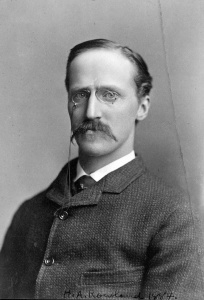
Rowland was father of American physics
There were various government funded efforts around this time (1880s); weather services, the National Bureau of Standards (the first national lab that wasn’t military related), geological and coastal surveys; physicists were involved in such government scientific programs from the get go. Various factions in the government thought these efforts were a waste of money (in particular populist types of the era, which was a time of economic difficulty with the great recession), and there were the typical internal political machinations in the scientific community designed to accrue power and influence over them; just like today. The NBS is worth a few words; the shopkeeps of the country were wildly corrupt at the time, and the physicists and chemists of the NBS were a hugely popular group of consumer protection crusaders for the common people.
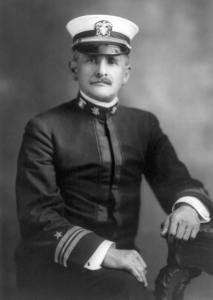
Michelson; uncle of American physics
Scientists of the current year who wonder why nobody respects them ought to remember this, and frankly, things like this are urgently needed in the US where everything from meat to vegetables is contaminated with disgusting chemicals, the big tech companies censor and spy on people for little reason, financial firms parasitize and dump risk on the common man, drug companies dump useless garbage on an increasingly medicated and unhealthy population and the “public health official” morons impose medical fascism on people who are in greater danger from eating too many cheeseburgers than the Wuhan coof. I mean there are obvious and enormous national health problems with …. obesity, autism, mental illness, rampant food allergies: people seem peculiarly incurious about all of these. Of course there are few scientists of the current year who could even stand up against regulatory capture of the candy industry, let alone the drug or soy industry, so I’m not holding my breath.
Contemporary with these fellows were America’s great inventors and industrialists, who were completely different people. Alexander Graham Bell, Westinghouse, Tesla, Edison: none of these guys had any sort of physics background, though eventually there was some social overlap. Similarly the great industrialists such as Stanford, Carnegie, Vanderbilt, Rockefeller were dumping their charity money into university endowments, grad schools (the Ph.D. was a fairly recent innovation), laboratories and foundations. Around this time, the early journals were started. Still weren’t too many physicists in the country, but it was coming; demand for physics coursework was high, from new engineering students. The giants at Johns Hopkins started planting seeds in other institutions in Chicago, Yale, Cornell, Harvard, Berkeley. George Hale’s Palomar observatory bred Caltech. In the decade of the 1890s, there were a total of 54 new physics Ph.D.s, but by 1909 it was 25 a year. Two years after Michelson became the first American physics Nobelist.
If you know physics history, you know these dates are the beginning period in the greatest flowering of physics creativity in human history. Most of the theory was done by Germans, many ethnic Jewish, while the US remained more or less a hub of experimental activity (similarly Britain I think). It was also a flowering of industrial activity; as larger areas became electrified and were hooked up to the new telephone technology. Industrial labs started hiring some of the new physicists, and they immediately began producing returns; even the humble light bulb was assisted by Irving Langmuir. Aircraft became a thing; also refrigeration, automobiles, vacuum cleaners, escalators, air conditioners, motion pictures, washing machines, safety razors; inventions which changed daily human life forever in ways which were absurdly huge. Radio; very classic physicist achievement (entirely by foreigners) it is worth remembering the distance from theory of Maxwell in 1865 to demonstration by Hertz in 1886 to practical implementations by Marconi in 1896 to widespread adoption after 1900 when contemplating imaginary bugaboos like quantum computing; (Benioff in 1982, to Shor in 1994; one of them should be the QC Maxwell and there still hasn’t been a Hertz yet).
Then the cataclysm of WW-1. I’ve always said this is the great changepoint of human history. Had it never happened the world would be completely different. It was a war fought with the new industrial technologies; a war of chemicals and steel production, of submarines, telephones and airplanes. As soon as the war started, the US had an industrial policy; if nothing else, we (meaning we Americans, sorry overseas bros) needed to replace critical items which were unavailable due to British blockades and war needs. Political operators including Palomar’s George Hale began to advocate for government funding through the National Research Council. There were various political machinations between different factions in the US technological establishment, but in the end the war happened and the physicists were utilized and found helpful. Optical glass industry had to be grown and developed at home to replace all the Zeiss optics and whatever the British were using. But the most important innovations the American physicists delivered was submarine finder technologies.
Up to this moment in time, the only great theorist the US ever had was Gibbs, and he didn’t have any noteworthy descendants. Most American physicists were experimentalists; tinkerers in the same sense that the Edisons of the world were tinkerers, except they knew stuff like how sound travels in water, how to detect the electron’s charge to mass ratio using oil droplets, or how to make nice telescopes. There were a number of very amusing characters from those days; Max Mason of U Wisconsin is one who stuck with me; a clubbable type guy with talents including chess, golf, violin and billiards; he pretty much came up with the submarine passive detection systems we used today. Another pair of characters involved in artillery range-finding was Augustus Trowbridge and Theodore Lyman, a couple of Boston Brahmin types who had to teach a bunch of roughnecks “splendid specimens …. like the big trees of their native Oregon” about differentials and hyperbolas and such while having fine wines and a mess featuring a french cook in the trenches of evenings. Lyman didn’t mind being shelled at least, he had hunted big game dontchaknow. The miniature portraits of these fellows gives a vivid picture of the old WASP elites, more or less acting like American versions of Bertie Wooster and Augustus Fink-Nottle.
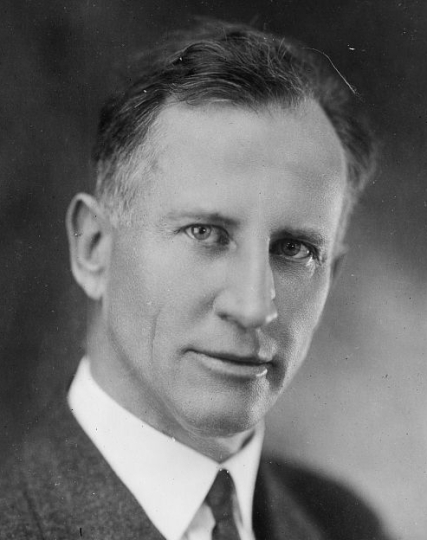
Max Mason
The aftermath of WW-1 demonstrated a lot of analogues to current year problems. Thanks to the British propaganda agencies, Germans were demonized. America used to have a large German speaking minority; WW-1 ended this. Rather astoundingly Hale and his allies in the NRC tried demonizing and bureaucratically “canceling” German scientists in Germany who had the temerity to support their own country during the war. This was completely bonkers. In addition to it being a ridiculous nationalistic thing to do, disguised, as is usual with Anglos as moralistic preening, the Germans were literally the leading members of the physics community. Hale instead of building bridges and returning physics to the international enterprise it always had been, was attempting to burn them; trying to get physicists from neutral countries to see things the Anglo-American perfidy way. All of it was ridiculous and disgusting, and is very much like current-year cancel culture. It went on through the dawn of modern Quantum Mechanics; Hale wouldn’t even allow his organization to cosponsor a visit to America by Einstein, who was Swiss, but spoke with a German accent.
The 20s started the real rise of colleges as a sort of US cottage industry; land grant schools, R&D research, university presidents as fund raisers; this was the birth of the whole encrusted edifice that threatens to destroy its host population. It was also the rise of PR used as a tool by scientists in fundraising, and it was very consciously deployed as such. Mind you it was mostly baloney: physics took a lot of credit from, like chemists, electrical engineers and statisticians for the recent technological evolutions; but the physicists had better PR -a pattern which continues to the present day.
The 1930s were fairly hard times for the physics community as everyone else. By this time there was a fair amount of populist religious people (mitigated by the number of high profile Christian physicists such as Millikan and Compton) and left wing rumbling against the pretensions of scientist types and their affiliation with monied interests and wealthy foundations, as well as their perceived involvement in “progress” which caused economic dislocations. As such there were, for the first time, layoffs. There were also New Deal government efforts which are the origin of most “Big Science.” Cyclotron research also got bound up in health care back then; something that always confused me (it persists to this day despite its generally dubious utility), but which seemed to be a funding scam by Lawrence. Interestingly many physicists were extremely conservative and against the New Deal due to their associations with business. This is a sort of bifurcation that persists to this day: industrial and military physics people are different from the rest of the scientific establishment, which is mostly a product of New Deal organizations. Of course, they were all united in preparations for war, for different reasons; a microcosm of what was going on in the country at large.
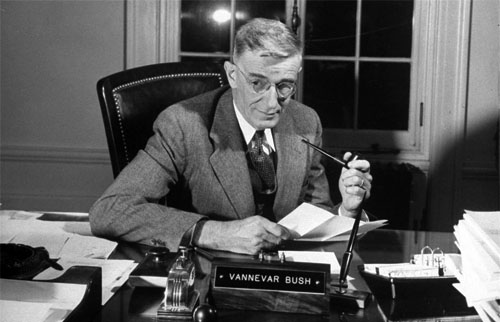
Vannevar Bush (despite his engineering background, or perhaps because of it) was one of the most crucial people in the development both of wartime physics and American technology in general, and the book paints a decent outline of his flinty New England “grandson of a whaling captain” character and early achievements. Interestingly he was not a New Deal man, but he saw the utility in using government agencies directly instead of going through independent bodies like the NRC as happened in WW-1 research. He was able to sell it with a single sheet of paper in front of FDR in 1940 based on already-existing NACA (aka NASA later); originally called the NDRC which was more research oriented, it later changed its name to OSRD which was more production oriented. Rather than setting up new labs as was attempted in WW-1 era, the idea was to use already existing scientific facilities as much as possible. OSRD management techniques persisted into the 50s with a few hot spots of innovation like Skunkworks and China Lake, but they’re largely extinct now. Entirely Klein type-1 organizational principles, and entirely entrepreneurial. You look at national lab operations now: it’s basically a big welfare pyramid where people continue to work on …. the same funding priorities people have literally been working on since the 1950s. No moving fast and breaking things, no innovation, no shuffling people into concentrations of excellence; just a bunch of nervous bureaucrats feathering their beds and playing bureaucratic power games with each other.
One of the characters who came up here who was of crucial importance: Alfred L. Loomis; a retired investment banker who had his own hobby physics lab; cousin of the Secretary of War, who ended up leading up the radar efforts as well as inventing LORAN (Loomis Radio Navigation), muzzle velocity chronos and a number of other things which are forgotten. He was an absolute giant, a figure who would be familiar to the Ancient Greeks representing all that was heroic and good in men of his time: he was from a first rate family, served his country as a soldier in WW-1, got a law degree, bought an investment bank, funded electrification of rural America, was an astute trader who called market top in 1928, and taught himself how to be a goddamned experimental physicist in the 1930s. There is literally nobody alive today like this: all you retired quants need to get to work in your personal laboratories.
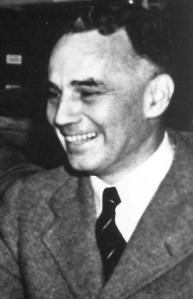
Alfred Lee Loomis
Other figures; Lee Dubridge founded MIT’s radiation lab where much radar and electronics oriented work got done: a middle class aw-shucks methodist who went on to a career managing other scientific facilities, most notably CalTech. Edward Bowles; former fur-trapper Missouri redneck EE professor who helped manage the growing enterprise. His experience as a hunter helped him manage growing Pentagon bureaucracy. Amusingly he hated all the physicists and didn’t get along well with flinty New England Bush very well either. His management and advice changed a bunch of key research directions and made the US much more effective in warfighting. Operations Research; aka 1940’s version of “data science” was founded by pioneers like Philip Morse. Amusingly, he was one of only a few of explicitly mathematical physicists who made large contributions, presumably by keeping to very practical real-world solutions. I always knew him as being one of the “Handbook of Mathematical Functions” guys, but he continued his work of managing large scale scientific enterprises. Ultimately this famous book probably came from wartime experience where people had to go look up Bessel functions in various other tomes; books like this were of vital importance before the existence of tools like Macsyma. Arguably still more useful. Donald Trump’s uncle John was also an important figure in these days.
Oppenheimer, Fermi and the Bomb are the most famous product of OSRD; everyone knows what happened there, but one highlight: the physicists, particularly Lawrence got cocky. The Calutrons were a preposterous waste of time and resources in hindsight. Because it was OSRD, they did have multiple approaches to deliver the final product, but it’s absolutely staggering how many resources were wasted in this efforts. It’s also hilarious redneck Ozarks ladies were more productive than physicists on similar equipment. Of course, plutonium chemistry at Hanford and the Gas diffusion efforts at Oak Ridge delivered the real product (the latter, further enriched by absurdly wasteful Calutrons). This is a great historical example to bring up when physicists try to get too fancy or egotistical about their ability to deliver some complicated atrocity where simpler techniques would do; humble chemists did most of the real work and other than a few guys like Seaborg (often mistaken for a physicist) got little of the credit. FWIIW Kevles just presented the facts; this is entirely my emphasis and interpretation of what happened. Similarly for subsequent comments.
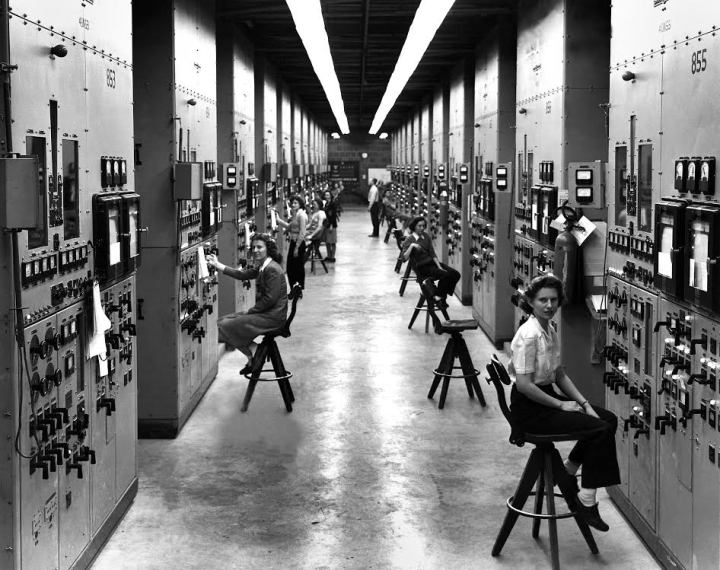
Virgin physicists versus Chad Calutron Girls
Postwar physics, like postwar everything else, was a completely different civilization. It had almost nothing to do with what came before and the first decade after Bush’s 1945 “Science the endless frontier” define the field to this day. Bush opened the government funded research chuckwagon. It also did away with the OSRD practicality and urgency. Bush basically opened the funding trough as an ongoing national investment with zero expectation of return. And zero returns is basically what we’ve gotten. The high energy physics of the 1940s were the nuclear guys; they kept the highest prestige and funding, getting bigger and bigger particle accelerators, and more and more seats in the physics departments. WW-2 put a crimp in the supply of new physicists; they weren’t going to get any more European braniacs, and the war had stopped the Ph.D. pipeline. 1946 was probably peak year for power and prestige of the American physics community. There weren’t enough of them, they were well paid and actually had significant political power; enough to put the Atomic Energy Commission under their civilian control. It’s also very obviously been downhill since then. The 50s and early 60s saw some interesting if wildly impractical results; the field has plummeted since then, to the point where it is best known for inventing glass-bead games for imaginary computers.
People on college campuses resented the expensive physicists of the postwar era, and it was extremely obvious the field became a sort of cargo-cult prestige scam over time. Quoting Kevles:
The younger physicists seemed interested too little in physics and accomplishment, too much in pay scales and security. They also expected a remarkable degree of luxury in the conditions of research. At Brookhaven, everyone seemed to want a new $3,500 (1953 dollars) oscilloscope. “Someone walked into my office the other day,” reported Samuel Goudsmit, who headed the laboratory physics department, “and complained that he had to share the one we’d got for him with another researcher.” The new recruits also seemed disturbingly content to submerge themselves in team research, publish papers jointly, often with as many as twenty other authors (lol; try 2000 now a days) — to become, in short, organization men.
We all know by now that the research program of the last two generations of high energy physicists have been an abject failure. It is little acknowledged when the sweet smelling putrefaction set in, not at some nebulous later date: post-WW-2 physics was largely a failure. By mid-1950s there were 21,000 practicing physicists in the US. These days the APS is about 60,000 people. In 1930 when things were actually happening there was 3,000. Even if we don’t think 60,000 physicists is too many for a country of 330 million, it’s abundantly obvious via the output (which is entirely …. papers) that the vast majority of these people are not engaged in any kind of useful work. While these people either loaf in some leafy ivory tower or scramble in some CERN slave factory horror show: even assuming they’re capable or hard headed enough to do useful work, they’re not mobilized to do so.
It’s a weird sort of irony that Vannevar Bush mobilized one of the great technological and scientific leaps forward in history, then killed physics with welfare cheese because he … more or less forgot how the Promethean fire was created. He remembered the money part, but that was only useful for certain kinds of problems, and only with the correct management, correct social structure and correct people. These days you can’t even get the correct people, and people labor away LARPing as Einsteins or Oppenheimers. The rest of the book goes into the various hippy protests against physicists and grubby rooting around for new sources of funding.
Assuming the US continues as an identifiable polity in 100 years, I’m pretty sure “physics as scam” rather than “physics as a study of nature and how it may be put to use by humanity” will continue. They’ll continue screwing around with particle accelerators because Livermore did. They’ll continue ridiculous mathemagical nonsense like noodle theory because they don’t know how to do anything else, other than live action role play they’re Einstein. The only way I could see it changing for the better is a geopolitical upheaval which would effectively end what remains of the post WW-2 order and the current reign of corrupt imbeciles running the US. Most of the West basically does what the US does. I suppose there could be new progress in China, Japan or Russia, but I don’t see much happening here for the next 50 or 100 years on the present trajectory.
Anyway, good book; depressing, but good.
Library of Chadnet | wiki.chadnet.org